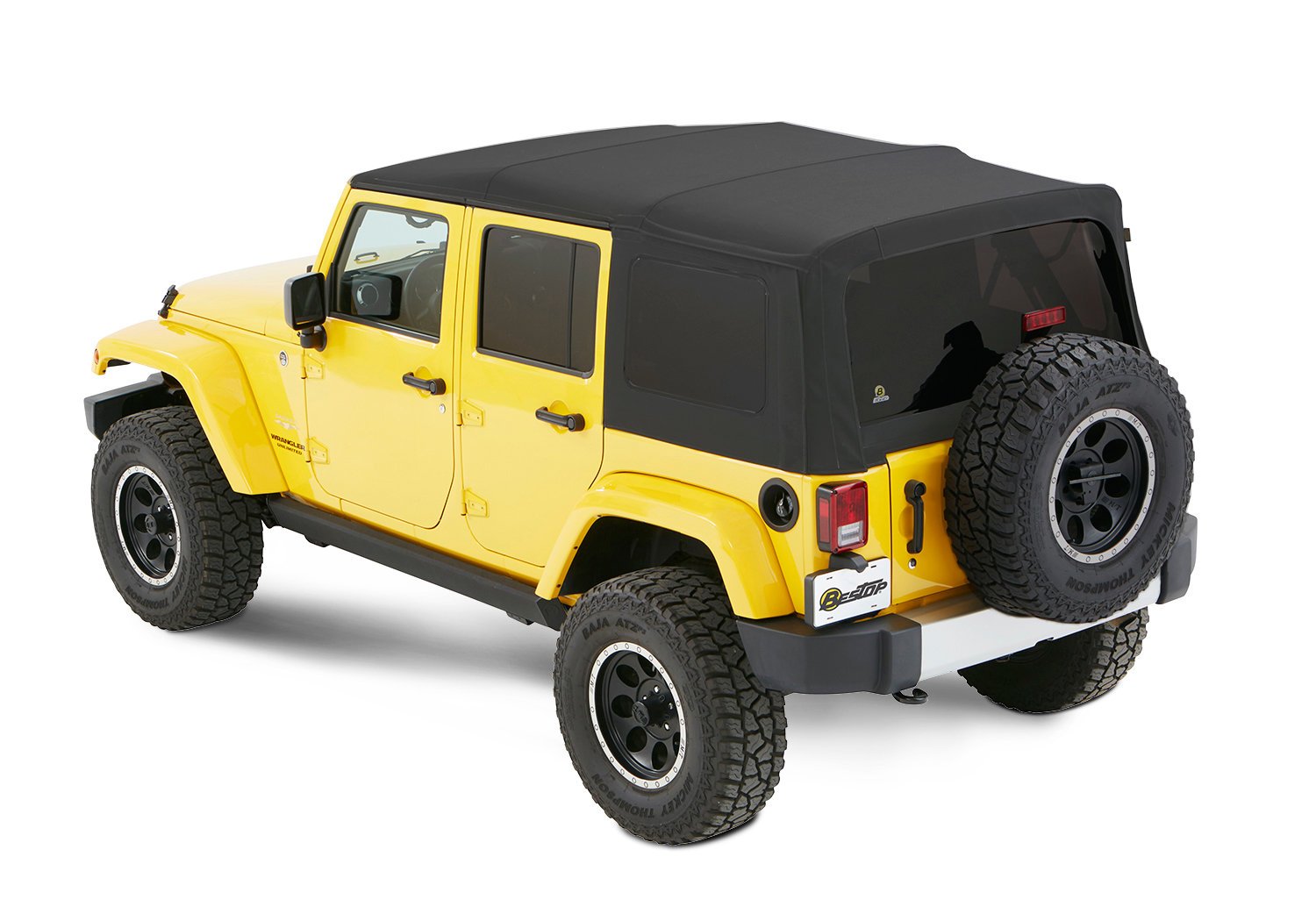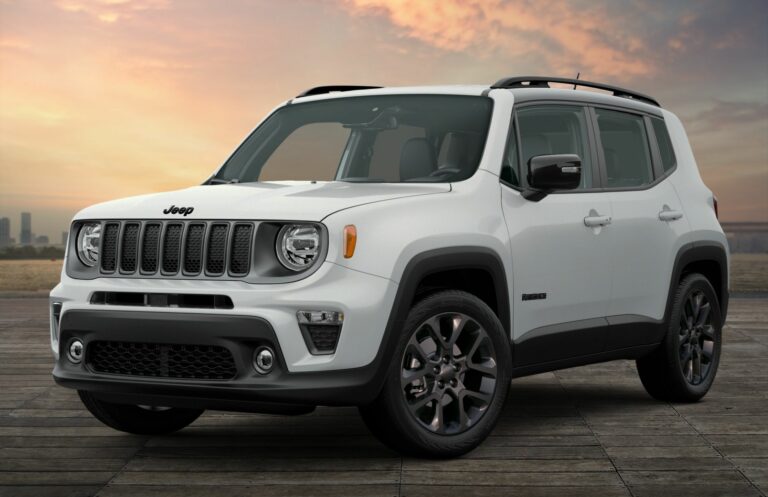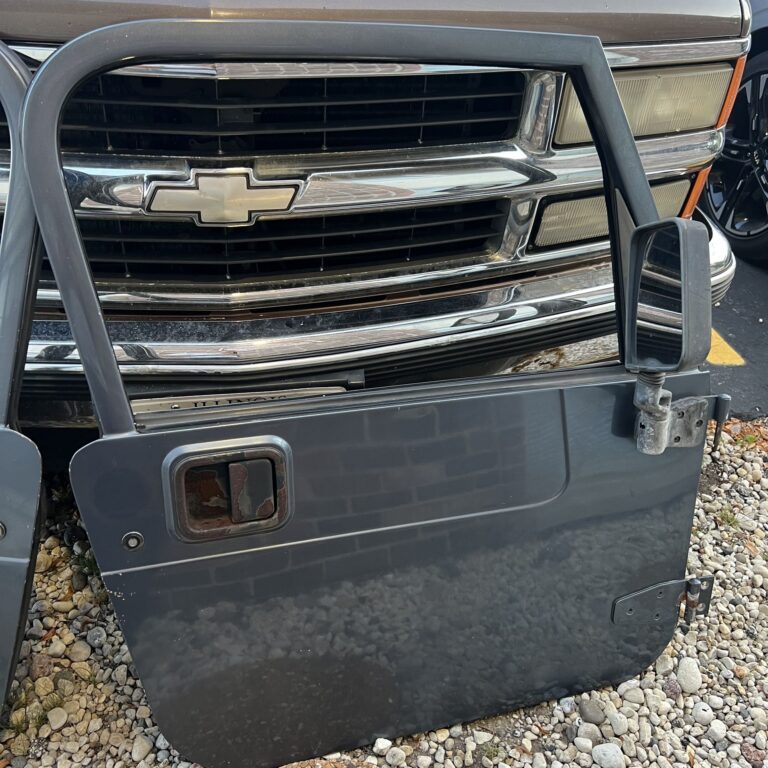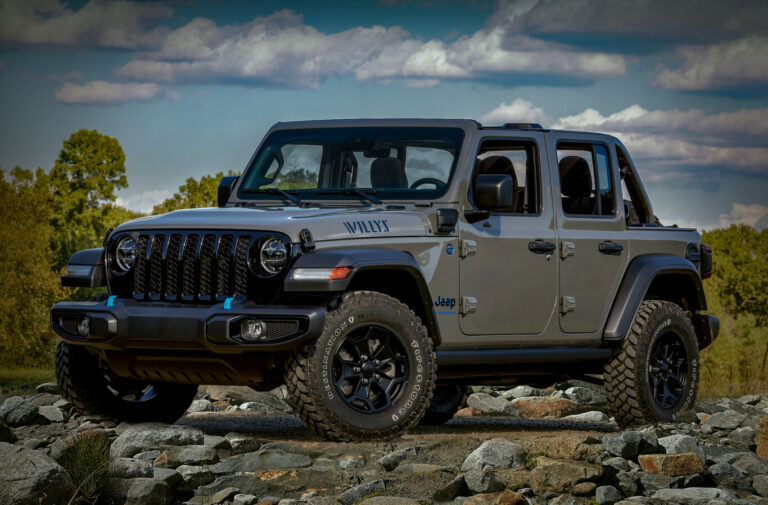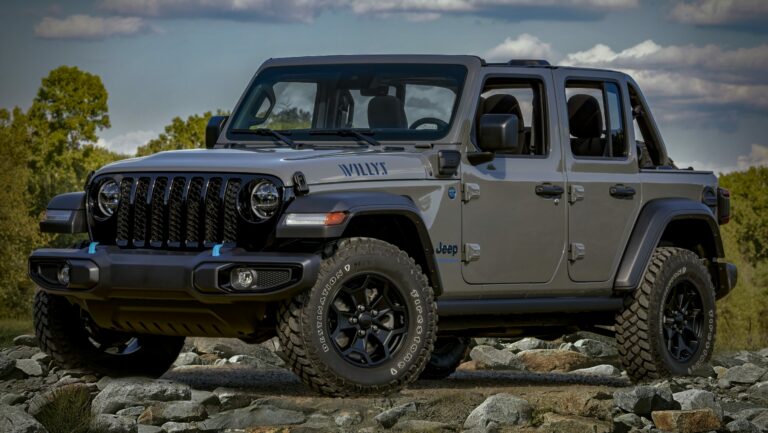Used Jeep Soft Tops For Sale: Unlocking Open-Air Adventure on a Budget
Used Jeep Soft Tops For Sale: Unlocking Open-Air Adventure on a Budget jeeps.truckstrend.com
The roar of the engine, the wind in your hair, and the open sky above – few experiences rival the freedom of driving a Jeep. While hardtops offer security and insulation, it’s the soft top that truly embodies the spirit of open-air adventure, transforming your rugged vehicle into an exhilarating, go-anywhere convertible. However, a brand-new soft top can be a significant investment, often putting that dream out of reach for budget-conscious enthusiasts. This is where the thriving market for used Jeep soft tops for sale becomes an absolute game-changer.
Buying a used soft top isn’t just about saving money; it’s about smart stewardship, finding discontinued styles, and breathing new life into a vital component of your Jeep. Whether your current top is tattered, you’re converting from a hardtop, or you simply want the versatility of swapping between styles, navigating the used market offers a treasure trove of possibilities. This comprehensive guide will equip you with the knowledge and tools to confidently find, inspect, and acquire the perfect used soft top for your beloved Jeep, ensuring your next adventure is just a top-down drive away.
Used Jeep Soft Tops For Sale: Unlocking Open-Air Adventure on a Budget
Why Consider a Used Jeep Soft Top? The Smart Choice for Savvy Jeepers
The decision to opt for a used soft top over a new one often comes down to several compelling factors, making it a highly attractive proposition for many Jeep owners.
- Significant Cost Savings: This is, arguably, the primary motivator. New OEM (Original Equipment Manufacturer) or premium aftermarket soft tops can cost upwards of $1,000 to $2,000, sometimes even more. A used top, depending on its condition and completeness, can be found for a fraction of that price, often ranging from $200 to $800. This saving can free up funds for other Jeep modifications or simply put more gas in the tank for your next off-road excursion.
- Availability of Specific Models and Styles: The new market primarily offers current generation tops. If you own an older Jeep model (like a TJ or YJ) or are looking for a specific discontinued style (e.g., a specific frameless design or a particular color not offered anymore), the used market is your best bet. It’s a dynamic marketplace where owners sell tops from all eras.
- Environmental Responsibility: Choosing a used top is an eco-friendly decision. It promotes recycling and reduces waste by extending the lifespan of existing products, lessening the demand for new manufacturing.
- Trial Period or Backup: If you’re currently a hardtop owner considering a soft top but aren’t entirely sure, a used top offers an affordable way to test the waters. It’s also an excellent option for a backup top if your primary one gets damaged or needs extensive repairs.
- Replacement for Damaged or Worn Tops: Over time, even the most well-maintained soft tops succumb to the elements. Fabric can fade, windows can haze, and zippers can seize. A used top can serve as a direct replacement for your worn-out original, restoring your Jeep’s aesthetics and functionality without breaking the bank.
- Hardtop to Soft Top Conversion: Many Jeepers buy their vehicle with a hardtop but later desire the flexibility of a soft top. A used soft top assembly (including the fabric, frame, and hardware) is the most economical way to achieve this conversion.
Types of Used Jeep Soft Tops: Understanding Your Options
Before diving into the search, it’s crucial to understand the different categories and types of soft tops you’ll encounter in the used market.
- OEM (Original Equipment Manufacturer) Tops: These are the soft tops that came installed on Jeeps directly from the factory. They are known for their precise fit, quality materials (though material quality can vary by model year), and often include all necessary hardware. They usually fetch a higher price in the used market due to their direct compatibility and reliability.
- Aftermarket Tops: Numerous companies produce soft tops for Jeeps, offering a wide range of styles, features, and price points. Popular aftermarket brands include Bestop, Smittybilt, Quadratec, Rugged Ridge, and Pavement Ends.
- Standard Replacement Tops: Designed to directly replace the OEM top, often using similar frame designs.
- Frameless Tops: These tops don’t require the factory frame. They typically attach directly to the roll bar and windshield, offering a sleek, low-profile look and often more interior space.
- Fastback/TrekTop Styles: Characterized by a sloping rear design, these offer a more aggressive, custom look compared to the traditional square-back design.
- Twist-Top/Sunrider Tops: Many soft tops, both OEM and aftermarket, feature a "sunrider" or "twist-top" function, allowing the front section to be easily flipped back for a quick open-air experience without folding down the entire top.
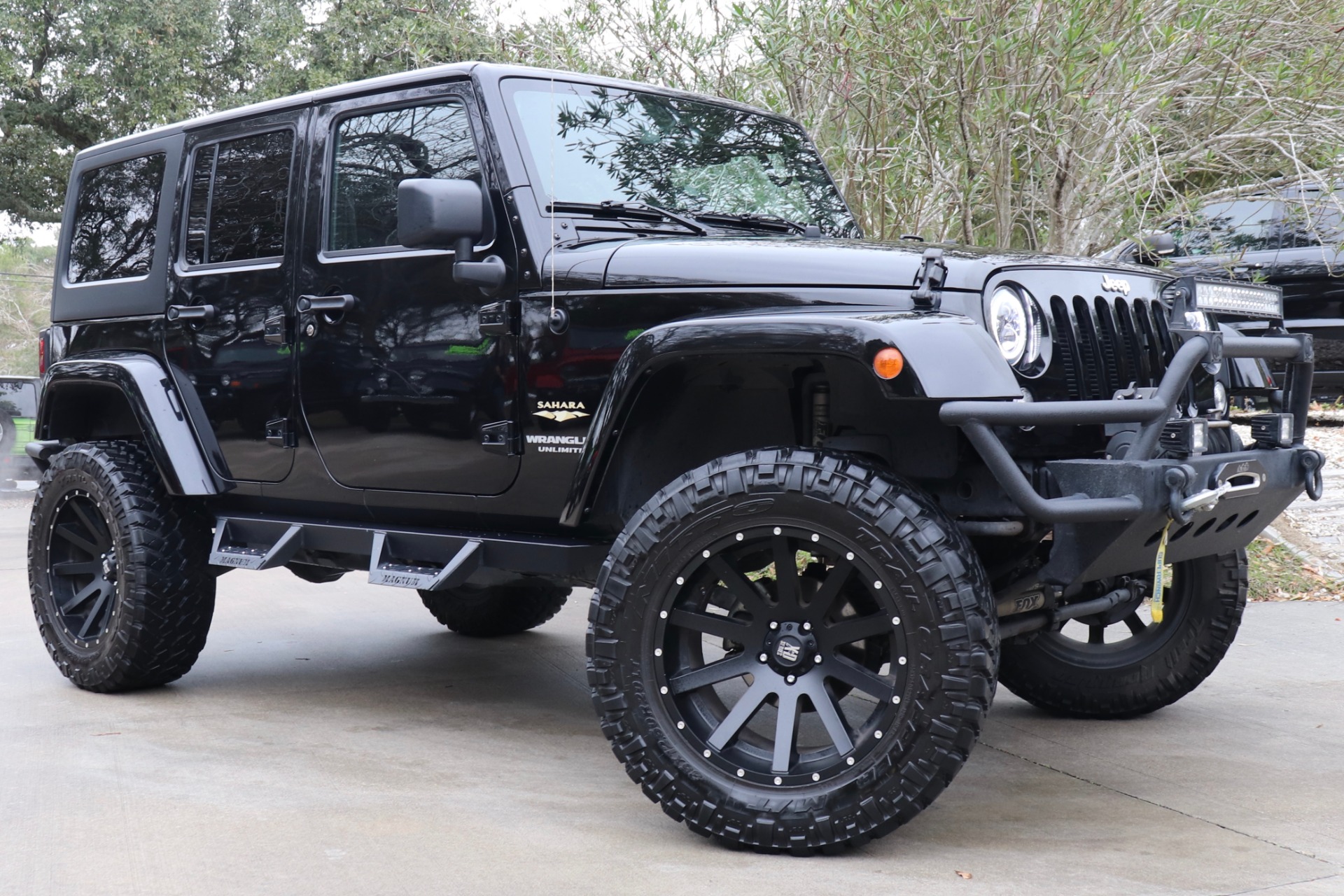
- Condition Categories: Used soft tops are typically categorized by their condition, which directly impacts their price and usability:
- Excellent/Like New: Minimal to no signs of wear, clear windows, fully functional zippers and hardware. These are rare finds and command the highest prices.
- Good: Minor cosmetic wear (light fading, small scuffs), windows might have light hazing but are still transparent, all major components functional. Most used tops fall into this category.
- Fair: Visible wear (moderate fading, small tears that might be patched, noticeable window hazing), some minor hardware issues (e.g., a sticky zipper, a missing snap). These are often priced significantly lower and might require some DIY repair.
- Parts Only/Salvage: Severely damaged, often missing major components, or only useful for salvaging specific parts (e.g., windows, a specific bow, a zipper). These are typically very cheap or even free.
- Jeep Model Compatibility: This is paramount. Soft tops are highly specific to Jeep models and often to specific model year ranges and body types (2-door vs. 4-door).
- CJ (1976-1986): Older, more basic designs.
- YJ (1987-1995): Distinct square headlights, unique soft top frame.
- TJ (1997-2006): Round headlights, very popular in the used market.
- JK (2007-2018): First 4-door Wrangler, different frame and window attachments than older models.
- JL (2018-Present): Latest generation, often with more advanced folding mechanisms and premium materials.
Where to Find Used Jeep Soft Tops For Sale: Your Hunting Grounds
Finding the right used soft top requires knowing where to look and being persistent.
- Online Marketplaces: These are your primary hunting grounds.
- Facebook Marketplace & Jeep-Specific Groups: Arguably the best place to start. Search "Jeep soft top" and filter by location. More importantly, join various Jeep Wrangler owner groups on Facebook (e.g., "Jeep JK Owners," "Jeep JL Forum," "Wrangler Parts For Sale"). Sellers often post items directly to these groups, reaching a targeted audience.
- Craigslist: Local classifieds are still a strong option for bulky items like soft tops where local pickup is preferred.
- eBay: Excellent for a wider selection, but factor in shipping costs, which can be substantial. Look for sellers with good ratings and detailed descriptions.
- Dedicated Jeep Forums & Classifieds: Websites like JK-Forum.com, JLWranglerForums.com, and WranglerForum.com have dedicated classified sections where members sell parts. These communities are often very knowledgeable and trustworthy.
- Specialized Used Parts Dealers (Online): Some online retailers specialize in used Jeep parts. While prices might be slightly higher, they often offer more reliable descriptions and sometimes even limited warranties.
- Local Sources:
- Off-Road Shops & Customizers: Many shops take trade-ins or have connections with customers upgrading their tops. It’s worth calling local shops to see if they have any used inventory or know of someone selling.
- Junkyards/Salvage Yards: Less common for soft tops (as they’re fabric and prone to damage in a wreck), but not impossible. If you’re looking for specific frame components or hardware, this could be an option.
- Jeep Clubs & Meetups: Networking with local Jeep enthusiasts is invaluable. Attend club meetings or events; someone might be looking to sell their top, or know someone who is. Word-of-mouth is powerful in the Jeep community.
- Tips for Searching:
- Be Specific: Use keywords like "Jeep JK soft top," "JL Sunrider top," "TJ Bestop frameless."
- Set Alerts: Many platforms allow you to set up alerts for new listings matching your search criteria.
- Be Patient: The perfect top might not appear overnight. Persistence pays off.
What to Inspect Before Buying a Used Soft Top: A Buyer’s Checklist
Once you find a potential candidate, a thorough inspection is crucial. Don’t rush this step, as it can save you from buyer’s remorse.
- Fabric Condition:
- Rips, Tears, Holes: Look closely, especially around seams, corners, and stress points. Small pinholes are common but larger tears are problematic.
- Fading: While common, excessive fading indicates prolonged sun exposure and potentially brittle fabric.
- Mildew/Mold: Check for green, black, or white spots, especially on the inside. Mildew can be tough to remove and indicates poor storage.
- Fraying Seams: Inspect the stitching. Frayed or separated seams are a red flag.
- Windows:
- Clarity: The biggest issue with used soft top windows is hazing, yellowing, or cloudiness. This significantly impacts visibility. While some hazing can be improved with plastic polish, deep scratches or severe yellowing are often permanent.
- Cracks/Punctures: Check for any physical damage.
- Zipper Functionality: Ensure all window zippers open and close smoothly without snagging or missing teeth. This is a common failure point.
- Zippers and Snaps (General): Test every zipper on the top (windows, rear, side panels). Look for missing teeth, corrosion, or stiffness. Check all snaps for functionality and rust.
- Frame and Hardware: (If applicable for your chosen top type)
- Bends/Damage: Inspect all bows, crossbars, and linkages for bends, cracks, or signs of impact.
- Rust: Surface rust on metal components is often minor, but deep, pitting rust can compromise structural integrity.
- Missing Pieces: Crucially, ensure all necessary hardware is present: door surrounds, tailgate bar, clips, screws, and the entire frame assembly (if not a frameless top). Missing parts can be costly to replace.
- Latching Mechanisms: Test how the top latches to the windshield frame.
- Seals and Weather Stripping: Check for cracks, dryness, or missing pieces in the rubber seals around the doors and tailgate. These are vital for weatherproofing.
- Compatibility: Re-confirm that the top is the exact fit for your Jeep’s model year, 2-door or 4-door configuration. A JK top will not fit a JL, and vice-versa.
- Completeness: Ask the seller explicitly what is included: fabric, frame, door surrounds, tailgate bar, instructions? A "bare top" might seem cheap but could end up being more expensive if you have to source missing parts.
- Ask Questions:
- "Why are you selling it?"
- "How old is the top?"
- "Has it ever been repaired?"
- "How was it stored when not in use?"
- "Can you send more detailed photos/videos of specific areas (e.g., window clarity, zipper close-ups)?"
- If possible, see it installed on their Jeep before they remove it.
Installation Tips and Maintenance for Your "New" Used Top
Once you’ve secured your used soft top, proper installation and ongoing care will maximize its lifespan and your enjoyment.
- DIY vs. Professional Installation:
- DIY: Most standard soft tops for TJ, JK, and JL can be installed by a mechanically inclined individual with basic tools (ratchet, various sockets/wrenches, possibly a screwdriver). There are countless YouTube tutorials specific to almost every top and Jeep model. This is the most cost-effective route.
- Professional: If the top is complex, you’re uncomfortable with the process, or you’re converting from a hardtop and need assistance with the initial setup of door surrounds and other hardware, a local off-road shop can install it for a fee.
- Pre-Installation Prep: Before installing, thoroughly clean the top using a soft top cleaner. Inspect it again for any minor issues you might have missed.
- Temperature Matters: Always try to install a soft top in warm weather (ideally 70°F or higher). The fabric becomes more pliable and easier to stretch, making installation smoother and ensuring a tighter, wrinkle-free fit.
- Maintenance for Longevity:
- Regular Cleaning: Use specific soft top cleaners (e.g., Bestop Fabric Protectant & Cleaner, 303 Aerospace Protectant). Avoid harsh detergents or pressure washers.
- Window Care: ONLY use plastic-specific cleaners (like Novus plastic polish) and a microfiber cloth. Never use ammonia-based glass cleaners, which will damage plastic windows. Clean gently to avoid scratches.
- Zipper Lubrication: Periodically lubricate zippers with a silicone-based lubricant or a specific zipper lubricant stick to ensure smooth operation and prevent seizing.
- Proper Folding/Storage: When lowering or removing the top, follow the manufacturer’s instructions to avoid creasing windows or stressing fabric. When storing it for extended periods, clean it thoroughly, ensure it’s completely dry, and store it in a clean, dry, climate-controlled environment, ideally in a soft top storage bag.
- Minor Repairs: Small tears can often be patched with specialized soft top repair kits. Seam sealer can reinforce aging seams. Addressing minor issues proactively prevents them from becoming major problems.
Potential Challenges and Solutions in the Used Market
While buying used is often rewarding, it’s not without its potential pitfalls. Being aware of these can help you navigate them effectively.
- Finding the "Right" One: The specific top you need (model, condition, price) might not appear immediately.
- Solution: Be patient, broaden your search geographically (if willing to travel/pay shipping), and set up alerts on marketplaces.
- Condition Discrepancy: The actual condition might be worse than described or pictured.
- Solution: Request numerous high-resolution photos from different angles, ask for video walk-throughs, and if possible, inspect in person. Ask specific questions about flaws.
- Missing Parts: A "deal" on a top might turn sour if crucial hardware is missing.
- Solution: Explicitly confirm all included components before purchase. Factor in the cost and availability of replacement parts if something is missing.
- Shipping Costs: For larger tops, shipping can negate much of the savings.
- Solution: Prioritize local pickup. If shipping is necessary, get a firm quote beforehand.
- Installation Difficulty: Some tops can be tricky, especially if you’ve never installed one.
- Solution: Watch multiple video tutorials for your specific top and Jeep model. Enlist a friend for help. If all else fails, consider professional installation.
- Buyer’s Remorse: After purchase, you might realize it’s not what you expected.
- Solution: Thorough research, meticulous inspection, and clear communication with the seller are your best defenses. Understand that "used" means imperfections.
Price Table: Estimated Used Jeep Soft Top Costs
Please note that these are estimated price ranges and can vary wildly based on location, seller urgency, specific brand/style, and the exact condition of the top. "Complete" typically means fabric, frame, windows, door surrounds, and tailgate bar.
| Jeep Model/Year Range | Type (OEM/Aftermarket) | Condition | Estimated Price Range (USD) | Notes |
|---|---|---|---|---|
| Jeep TJ (1997-2006) | OEM Factory Top (Complete) | Good | $300 – $600 | Common, durable. Windows often show hazing. Frame usually included. |
| Bestop/Smittybilt (Complete) | Good | $250 – $550 | Aftermarket options, often with updated features. | |
| Fabric Only (No Frame) | Fair | $100 – $250 | For those with existing frame. Condition varies widely. | |
| Jeep JK (2007-2018) | OEM Factory Top (2-Door) | Good | $400 – $800 | Abundant. Sunrider feature common. Includes hardware. |
| OEM Factory Top (4-Door) | Good | $500 – $1000 | Larger, thus higher demand and price. | |
| Aftermarket Frameless (e.g., Bestop Trektop) | Good | $350 – $750 | Popular for aesthetics, no bulky frame. | |
| Fabric Only (2/4-Door) | Fair | $200 – $400 | For replacing worn fabric on existing frame. | |
| Jeep JL (2018-Present) | OEM Factory Premium Twill | Excellent | $800 – $1500 | Newer, higher quality fabric, often less wear. Still expensive used. |
| OEM Factory Standard Black | Good | $600 – $1000 | Most common JL used top. | |
| Aftermarket (e.g., Bestop Trektop Ultra) | Good | $700 – $1200 | Advanced features, often less common used. | |
| Jeep YJ/CJ (Older) | Various (OEM/Aftermarket) | Fair-Good | $150 – $400 | Rarer finds, condition varies greatly. Often for restoration projects. |
Frequently Asked Questions (FAQ) About Used Jeep Soft Tops
Q1: Is it hard to install a used soft top?
A1: Installation difficulty varies by Jeep model and top type. OEM tops on TJ/JK/JL are generally straightforward with the right tools and a good tutorial. Frameless tops can be simpler as they use less hardware. It’s a manageable DIY project for most, but patience and a warm environment are key.
Q2: Can I put a soft top from a JK on a JL, or a TJ on a JK?
A2: No, soft tops are generally NOT interchangeable between different Jeep generations (e.g., TJ, JK, JL, YJ). The body dimensions, roll bar designs, and attachment points are different. Even within the same generation, 2-door and 4-door tops are distinct. Always verify compatibility for your exact model year and body style.
Q3: How do I clean a used soft top that has mildew or is very dirty?
A3: Start with a thorough vacuuming. Then, use a dedicated soft top cleaner (many brands like Bestop, 303, RaggTopp offer these). Apply according to instructions, using a soft brush for stubborn spots. For mildew, a diluted solution of white vinegar (1 part vinegar to 10 parts water) can help, but test in an inconspicuous area first. Rinse thoroughly and allow to air dry completely.
Q4: What’s the biggest difference between a used OEM and a used aftermarket top?
A4: OEM tops generally offer a guaranteed factory fit and finish, often with quieter performance due to specific material choices and frame designs. Aftermarket tops, particularly from brands like Bestop, can offer innovative features (like frameless designs, Sunrider options, or premium twill fabric) and sometimes better durability or style options than the basic OEM. Quality varies more widely among aftermarket brands.
Q5: Is it worth buying a soft top with damaged windows?
A5: It depends on the price and the extent of the damage. Minor hazing or scratches might be repairable with plastic polish. However, deeply cracked, severely yellowed, or heavily scratched windows are often not salvageable. Replacement windows are available but can be expensive, potentially negating your savings. Factor the cost of replacement into your decision.
Q6: What’s the average lifespan of a used soft top?
A6: The lifespan of a new soft top is typically 5-10 years, depending on climate, sun exposure, and care. For a used top, its remaining lifespan depends heavily on its initial condition and how well it was maintained by the previous owner. A "good" condition used top might still offer 3-7 years of reliable service with proper care, while a "fair" one might only last a year or two before needing significant repairs or replacement.
Conclusion: Embrace the Open Road with a Smart Purchase
The market for used Jeep soft tops for sale is a vibrant ecosystem that offers fantastic opportunities for Jeep enthusiasts to enhance their driving experience without emptying their wallets. By understanding the types of tops available, knowing where to search, and meticulously inspecting potential purchases, you can confidently navigate this market.
Remember, patience and diligence are your best allies. A well-chosen used soft top not only saves you money but also allows you to enjoy the unparalleled freedom and versatility that only a Jeep with its top down can provide. So, do your research, inspect thoroughly, and get ready to feel the wind in your hair and the sun on your face – your next open-air adventure awaits!

